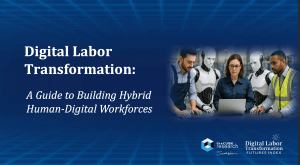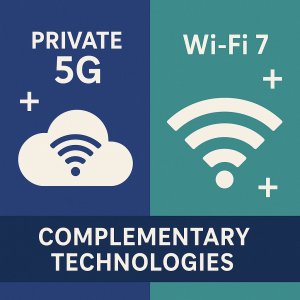At GTC DC, Jensen surprised the press and analyst corps by bringing Energy Secretary Wright to the stage for an AMA. In our view, this was a revealing Q&A session, highlighting the urgency of America’s leadership in the AI era. Jensen Huang and Secretary Wright framed AI as both an industrial project and a national priority, with high stakes across energy, manufacturing, telecom, and geopolitics. Below is our synthesis of the session’s key themes and our takeaways.
We believe the conversation crystallized three legs of the current AI agenda, including: 1) Scale and speed via public-private partnerships that push permitting, land, energy, and capital into rapid deployment; (2) Industrialization of AI across supply chains, telecom, and safety-critical systems; and 3) a Geopolitical strategy that aims to sustain U.S. leadership by winning developers globally – China included – while re-shoring advanced manufacturing and expanding domestic energy capacity.
The New Public–Private Partnership Model
Key Issue: Secretary Wright cast AI as “the next Manhattan Project,” arguing that the U.S. must lead through different kinds of partnerships – DOE labs bring land, energy, and accelerated timeframes. The industry brings technology and capital. Jensen underscored NVIDIA’s commitment to help supply and build seven DOE supercomputers, the largest AI system for DOE, and collaborations with eight labs on quantum.
In our opinion, this is the operating model for AI factories at national scale: accelerate entitlements, co-site with power, and pre-commit capacity. Our research indicates this template compresses time-to-compute from years to months, a critical lever as models become always-on, low-latency “infrastructure.”
Manufacturing, Packaging, and “Made in America”
Key Issue: Huang said Blackwell chips are being manufactured in the U.S., with advanced packaging (currently offshore) targeted to stand up domestically “in the next several months,” in partnership with TSMC, and others. He expects manufacturing, packaging, and system integration (including Foxconn facilities) to come together onshore.
Our take is that packaging is a bottleneck for high-end GPUs. If the U.S. closes the packaging gap on an accelerated timeline, the supply-chain risk for advanced AI systems improves materially and ideally, job creation comes next.
Energy Is a Mission Critical Priority
Key Issue: Wright said that if the U.S. doesn’t rapidly expand electric generating capacity, it loses the AI race; period. Huang of course agreed commenting that “every form of energy ought to be deployed,” while emphasizing efficiency – Grace Blackwell at ~10X Hopper performance with ~1.5X power.
We believe the winning AI factories will pair power abundance with architecture-level efficiency. The fastest builders are converging on both fronts, specifically: 1) Build more megawatts and produce more tokens per watt via silicon, networking, and “extreme co-design.”
Geopolitical Comments on Developers, Diffusion, and the 80/20 Rule
Key Issue: Jensen’s dogma is consistent and reminds us of a calmer version of Steve Ballmer’s rant (Developers! Developers! Developers!) Specifically, win the developers globally, including in China (which he notes accounts for ~50% of AI researchers and large shares of open-source contributions). He advocated policies that keep America ahead while diffusing the American tech stack to ~80% worldwide consumption – arguing that shutting out China’s developer base ultimately hurts U.S. platforms.
In our opinion, the previous administration’s posture on this issue was a 180 from the current agenda. They saw the diffusion of leading edge tech as a short-term money grab by NVIDIA. We totally disagree with that premise and in our view it is more like the diffusion of the Wintel platform; or 5G globally (a race in which the U.S. fell behind). Platform leadership drives hardware and software synergies and the developer race should not be constricted by export controls. History in tech shows the optimal path is nuanced but still pretty clear. In other words, preserve national security, onshore critical manufacturing, and still make U.S. standards the global platform by maximizing legal distribution and ubiquitous access.
Telecom Aspirations: Can the U.S. Flip 5G Laggard into 6G Leader?
Key Issue: NVIDIA introduced ARC (a domain-specific accelerated computing platform for wireless) and highlighted Aerial (CUDA-X radio libraries). The company’s $1B Nokia deal is positioned as tech innovatoin plus function, where Nokia apps on NVIDIA radios, with an “open platform,” including Japan partners (Fujitsu, NTT DoCoMo, SoftBank). ARC is behing positioned as a multi-billion-dollar opportunity and a research platform for 6G.
It’s unclear if Nokia has the ability, combined with NVIDIA to make ARC + Aerial is the obvious path to re-platform RAN into cloud-style software-like economics. The idea here is AI both manages RAN and makes it more efficient. If successful, U.S. standards have a chance to regain strategic ground lost in 5G by making American stacks the default for radio intelligence. This in our view is a longer shot than other initiatives Jensen has announced due to the current position of U.S. tech and Nokia’s underdog position relative to Huawei and Ericsson who lead mobile RAN 4G/5G in China and globally. Nokia has a strong patent portfolio (thank you U.S. government for the AT&T breakup gift of Bell Labs) a strong position in private 5G but that’s now where this global race will be won in our view. Rather the CAPEX installed base of the leaders will be difficult to unseat.
AI Factories – It’s All About Token Output
Key Issue: Jensen reframed AI factories as “token generation machinery,” analogous to power plants in the last industrial revolution. Expect giant sites networked as one coherent factory (Spectrum-XGS), plus smaller factories in enterprises (e.g., Tesla’s Colossus) and at the edge (RAN sites becoming near-edge token generators).
Our belief is the topology of AI production will be decentralized – where you’ll have mega-plants for scale, enterprises for data and process gravity/sovereignty, and telecom edge for low latency and low power. Networking that makes multiple sites behave as one logical factory becomes a core source of advantage. NVIDIA in our view has a leading position in this regard with its scale up/out/across networking portfolio.
Safety, Robotics, and Physical AI
Key Issue: NVIDIA is making safe computing a first-class design goal (Helios) across autonomous vehicles, surgical robots, and manufacturing. The company reiterated that while 90% accuracy can delight in consumer use cases (e.g. ChatGPT), a 10% failure rate in physical AI is “tragic,” demanding a measured, standards-driven approach.
In our view, the next leg of growth requires translating digital AI wins into physical reliability. This shifts emphasis to formal methods, redundancy, deterministic fail-safes, and certified processes and tools where incumbents with deep safety DNA have experience. We believe that the adoption of general purpose, humanoid robots as well as Level 5 FSD are “last mile” problems that will remain challenging through this decade.
Jobs and Productivity
Key Issue: Wright argued that AI’s productivity lift will be broad-based, benefitting the “curious” regardless of hard math skills. Jensen, for his part, stressed the need for “mountains” of skilled craft labor – mechanical, electrical, plumbing, construction – to build the AI infrastructure.
We believe the near-term impacts will be felt before massive job creation in infrastructure and augmentation-heavy knowledge work. Over time, the diffusion of agentic systems will favor organizations that embed AI in workflows rather than treat it as a bolt-on copilot; and this, in our view will be a crossing over point where job creation far outweighs job loss. But there will be a painful transition period for many workers.
Policy Issues: Rev-Sharing, Exports, and Market Access
Key Issues: On potential revenue-sharing for China sales, Jensen said a regulation would need to be created and that current Chinese policy makes the question moot (for now). He maintained a neutral stance on speculative government equity stakes in NVIDIA. On exports, he advocates a balanced approach that keeps America ahead while enabling global diffusion toward the 80% goal.
IThe policy frontier is moving from poorly-thought-out constraints by the previous adminstration, to more structured – albeit sometimes seemingly haphazard – access. We believe the right approach is policy-driven controls that support diffusion but balance national security. Designing those guardrails will, along with product and execution excellence, will define whose tech stack becomes the world’s default.
Our Take
We believe this session put forth a practical narrative for the AI factory decade. Specifically, Jensen and Secretary Wright communicated a laser focus on releasing energy, localizing advanced manufacturing, AI factories as a true, networked system, making an earnest bid at telecom, and a win developers everywhere mentality. In our opinion, the countries and companies that execute on these pillars at lowest cost, highest speed – in parallel – will set the trajectory for the next industrial age. Telco is the riskiest piece of the puzzle and; in our view both vital and worthy of persistence.



